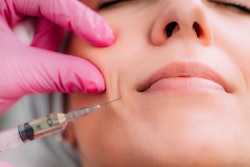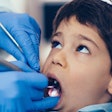
The majority of dental practices have successfully rebounded in the face of COVID-19-related challenges as patients gain a deeper understanding of the important role dental health plays in overall health and have returned in great numbers to their local dental office. Dental practices were also able to implement enhanced safety protocols quickly and efficiently and provide clear and consistent communication to ensure patients felt safe returning to the practice. They also implemented teledentistry, online and mobile payment options, and remote check-in processes to enhance efficiency and convenience and limit face-to-face interaction.
Now, with 2021 almost upon us, the ADA is closely monitoring the sustainability of the dental industry's recovery as practices extend appointment times to allow for proper sanitization protocol and see fewer patients per day. Although practices are changing their schedules and prioritizing specific dental procedures, with personal protective equipment (PPE) expenses slightly up and production down, dental practices will need to focus on enhancing revenue and reducing overhead expenses to secure long-term financial stability. This will be especially important if the virus spreads during colder months, causing patients to feel concerned about coming to the practice, or if a second wave results in stricter lockdown measures.
To bolster their finances and prepare for an uncertain future, dental practice owners should consider capitalizing on some of the following industry trends.
Rise of alternative financing options
 Dan Croft.
Dan Croft.COVID-19 has negatively financially impacted many patients who may need dental care but are concerned about their ability to pay for these services. To help maintain long-term financial sustainability, practices should consider offering dental memberships, discounts, and third-party financing plans to make dental care more affordable and accessible. While many practices may have previously had these offerings, dentists should now expand their alternative financing options, utilize them more frequently, and actively publicize their availability. Alternative financing options, such as dental memberships, provide practice owners with a regular stream of income and are affordable for the patient.
Increase in dental esthetics and stress-related conditions
As patients stare at themselves more than ever on video conferencing services, there has been an increased interest in cosmetic dental services to appear more attractive on screen. The "Zoom effect" has led to a rise in noninvasive esthetic treatments such as teeth whitening, porcelain veneers, injectable therapy, dermal fillers, and dental implants. An American Academy of Facial Esthetics study found that members who offered injectable therapy experienced an 18% increase in injectable production, compared with pre-COVID-19 levels, and a 12% rise in new patients for injectable treatment. To add an additional revenue stream, practices should consider obtaining the certification to offer these dental esthetic services.
Additionally, the stress related to COVID-19 has led to more cracked and chipped teeth as well as dry mouth, especially among healthcare workers who wear masks all day and become overheated. Dentists are also seeing an increase in dental-related emergencies from patients who delayed seeing the dentist and allowed a minor issue to turn into a more expensive procedure. Dentists should be prepared to cater to these urgent dental concerns and larger procedures to support their current patients and help grow their existing patient base.
Focus on teledentistry
The pandemic has sparked positive innovations in the dental industry, and teledentistry will continue to be a key focus for the industry in 2021 and beyond due to its ability to allow dentists to prescreen patients and prioritize patient appointments. Through teledentistry prescreening appointments, dentists are able to assist high-risk patients with preexisting conditions that they would not have known about previously and optimize their schedule. By using teledentistry, dentists can fill up dental chairs with important procedures and avoid scheduling quick in-person visits and check-ins. Teledentistry also limits the need for direct patient interaction, which is especially important in today's environment.
Overall, teledentistry is a win-win for both practice and patient because it allows practices to operate more efficiently and provides a quick, safe experience for the patient. Based on these benefits, dental practices should consider enhancing their teledentistry services and leveraging its value to new and returning patients.
Acceleration of incorporating dental insurance into overall health insurance
COVID-19 has served as an important reminder of the essential role dentistry plays in overall healthcare. Dental practices were designated as essential businesses and remained open for urgent/emergency procedures at the onset of the pandemic. Dentistry has also been elevated in the public sphere, and there is a great deal of information now available on dentistry's essential role in helping to fight systemic diseases. As states recognize that better oral health leads to better overall health, they are continuing to push for more government-supported dental insurance programs like the Children's Health Insurance Program (CHIP). By advocating for more holistic care by tying dental care into overall medical coverage, governments aim to save money through preventative treatments. In addition, many practices are also reevaluating their current private insurance providers to ensure that reimbursements are adequate to maintain their needed profit margins, aided by the increase in dental benefits and plan offerings.
While these trends will remain top of mind in 2021, the future is bright for dentists due to aging populations, industry innovations, rising levels of dental insurance, and improved dental access for low-income individuals. Additionally, as many dentists retire, there is great opportunity for the limited number of graduating dentists to own their own practice. Overall, the pandemic should have a low to moderate effect on the dental industry long-term as people now truly appreciate and understand the vital role that dental health plays in their overall health and, thus, the importance of returning for both preventative and comprehensive dental health services.
Dan Croft has been the head of TD Bank's Healthcare Practice Solutions Group since 2014. In this role, he is responsible for overseeing and growing TD Bank's healthcare practice finance business, which assists dentists, veterinarians, optometrists, physicians, and podiatrists in choosing sound financial solutions for their practices. Croft has more than 20 years of experience.
The comments and observations expressed herein do not necessarily reflect the opinions of DrBicuspid.com, nor should they be construed as an endorsement or admonishment of any particular idea, vendor, or organization.



















